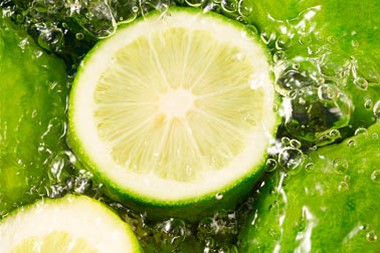Understanding the Distinction Between Sorbitol and D-Sorbitol
Introduction
In the realm of food and pharmaceuticals, the names Sorbitol and D-Sorbitol often surface. These compounds are popularly utilized as sugar substitutes, sweeteners, and excipients in various industries. However, there exists some confusion regarding the differences between Sorbitol and it. This article aims to elucidate the disparities between these compounds, shedding light on their distinct properties, applications, and significance in different sectors.
Chemical Composition and Structure
Sorbitol and it share a common chemical structure as sugar alcohols or polyols, making them isomers of one another. Isomers are compounds that possess the same molecular formula but differ in structural arrangements. The "D" in it signifies the configuration of the hydroxyl groups on the compound's chiral carbon atoms. Chirality refers to the spatial structure of atoms within a molecule, resulting in mirror-image forms known as enantiomers. it specifically denotes the enantiomer with the hydroxyl groups configured on the right side.
Manufacturing Process
Both Sorbitol and it can be produced through catalytic hydrogenation of glucose, usually obtained from corn or wheat starch. This process involves converting glucose into sorbitol by reducing the aldehyde group to a hydroxyl group. The outcome of this process includes a mixture of isomers, among which it is typically the dominant form. To isolate it, further refining steps are employed, which may involve processes like chromatography or crystallization.
Physical and Chemical Properties
Sorbitol and it share similar physical and chemical characteristics owing to their shared molecular formula. They are both water-soluble, sweet-tasting, odorless, and possess hygroscopic properties, meaning they attract and retain moisture from the environment. These traits make them ideal for applications in the food and pharmaceutical industries.
Applications in the Food Industry
Sorbitol and D-Sorbitol find extensive use as sugar substitutes and sweeteners in the food industry. Their sweetness is lower compared to sucrose (table sugar), making them suitable for individuals aiming to reduce caloric intake. They are often utilized in sugar-free or reduced-sugar products such as chewing gum, candies, and diabetic-friendly foods. Due to their hygroscopic nature, they also play a role in enhancing the texture and shelf life of baked goods, preventing them from drying out.
Pharmaceutical and Medical Applications
In the pharmaceutical sector, both Sorbitol and it have applications as excipients in drug formulations. Excipients are substances used alongside active pharmaceutical ingredients to facilitate drug delivery, enhance stability, and ensure proper dosing. Their hygroscopic properties aid in maintaining the integrity of medications, preventing them from becoming too brittle or friable.
it, being the more refined enantiomer, is often preferred in pharmaceutical applications due to its higher purity. It is used as a diluent in oral liquid formulations, helping to achieve accurate dosing. Additionally, sorbitol solutions are employed as laxatives, as they are not readily absorbed by the intestines, leading to an osmotic effect that softens stools and alleviates constipation.
Industrial Uses
Beyond the food and pharmaceutical industries, Sorbitol and it have a place in various other sectors. They are utilized in the manufacture of cosmetics, personal care products, and oral hygiene items like toothpaste. Their moisture-retaining abilities are harnessed in products that require texture modification, such as gels and creams. Moreover, these compounds can be found in pet care products, contributing to the palatability and texture of pet foods.
Conclusion
In the world of sweeteners and excipients, Sorbitol and it stand out as versatile compounds with overlapping applications. While they share many characteristics due to their isomeric relationship, the distinction lies in their chiral configurations and refining processes. Their utility spans across industries, from confectionery to pharmaceuticals, contributing to products' taste, texture, and stability. Recognizing their differences and applications is pivotal for formulators, researchers, and consumers seeking healthier alternatives in various aspects of daily life.

What is it solution?
D-Sorbitol solution, a commonly utilized sugar alcohol, finds its significance across various industries due to its unique properties and versatile applications. This colorless and odorless liquid is often extracted from fruits, particularly berries, cherries, and apples. With a chemical structure that resembles glucose, it exhibits several advantageous characteristics, making it a sought-after ingredient in industries ranging from food and pharmaceuticals to cosmetics and personal care.
Chemical Properties and Production
it, also known as glucitol, is a sugar alcohol with the molecular formula C6H14O6. It is a six-carbon sugar alcohol featuring hydroxyl groups on each carbon atom. Its sweetness level is less than that of sucrose, which makes it a suitable option for various sugar-free and reduced-calorie products.
it is commonly produced through the hydrogenation of glucose, converting it into sugar alcohol. This process involves the catalytic reduction of glucose in the presence of a suitable catalyst, resulting in the conversion of the aldehyde functional group in glucose to a hydroxyl group. The final product is then purified and concentrated to form a clear and colorless solution.
Applications in the Food Industry
The food industry extensively employs its solution as a sugar substitute in a variety of products. Its ability to retain moisture while preventing crystallization makes it an ideal ingredient for confectionery items like candies, chewing gums, and baked goods. Sugar-free and reduced-sugar foods offer sweetness without the caloric impact of traditional sugars.
Furthermore, its humectant properties help enhance the texture and shelf life of food products. It prevents products from drying out and becoming stale, thus maintaining their quality and freshness for extended periods.
Pharmaceutical and Medical Applications
it solution finds crucial applications in the pharmaceutical and medical sectors. Due to its non-toxic nature and its compatibility with the human body, it is utilized in liquid formulations of medications, particularly those requiring a sweet taste or a thickened consistency. In some cases, it is employed as a stabilizer or an excipient in drug formulations.
In addition, its solution has mild laxative properties, making it an ingredient in some over-the-counter oral solutions used to alleviate constipation. Its ability to draw water into the intestines aids in softening stools and promoting bowel movements.
Cosmetics and Personal Care
The humectant and moisturizing properties of it make it a valuable component in cosmetics and personal care products. It is often included in skin creams, lotions, and body washes due to its capacity to attract and retain moisture, thereby helping to maintain skin hydration. This is particularly beneficial for individuals with dry or sensitive skin.
Its role in cosmetics also extends to hair care products, where it helps prevent hair from becoming brittle by maintaining its moisture content. Shampoos, conditioners, and hair serums may contain it to enhance their effectiveness.
Other Industrial Applications
Beyond its uses in the food, pharmaceutical, and cosmetic industries, its solution serves various other purposes
1. Plastics and Polymers it is utilized as a plasticizer and humectant in the production of plastics and polymers, enhancing their flexibility and moisture retention.
2. Chemical Synthesis It serves as a starting material in the synthesis of various chemicals and compounds, including certain flavoring agents and fragrances.
3. Ceramics and Glass it solution is sometimes added to ceramic and glass formulations to control the viscosity of the materials during processing.
Conclusion
Its solution's multifaceted properties have cemented its position as a valuable ingredient in numerous industries. From enhancing the texture and shelf life of food products to serving as a sweetening agent in pharmaceuticals and cosmetics, it's versatility knows no bounds. Its non-toxic nature, compatibility with human health, and utility across various applications underscore its importance as a prominent ingredient in modern manufacturing. As industries continue to innovate, it solution remains a steadfast component, contributing to developing a wide range of products that touch our lives daily.
Who Should Consider Consumption?
Introduction
it, a sugar alcohol with a sweet taste, finds its application in various industries due to its unique properties. While it has a range of potential benefits, it's important to understand who might benefit from consuming it. This article delves into the different sectors where its usage is prominent and the individuals who should consider its consumption.
Food and Beverage Industry
it is widely used in the food and beverage industry as a sugar substitute. It's particularly suitable for individuals with diabetes or those looking to manage their blood sugar levels. Its slow absorption rate in the body helps prevent rapid spikes in blood glucose, making it a suitable alternative to traditional sugars.
People who need to control their calorie intake might also find it appealing. Since it has fewer calories than regular sugar, it can be incorporated into various low-calorie and sugar-free products, such as diet beverages, sugar-free candies, and baked goods.
Pharmaceuticals and Oral Health
it plays a vital role in pharmaceuticals, especially in the manufacturing of various medications and supplements. It's commonly used as an excipient in drug formulations, providing bulk and texture to the medication. Individuals who have difficulty swallowing large pills might find it-containing medications easier to ingest due to their smoother texture.
Additionally, it's properties make it a valuable ingredient in oral health products. Its non-cariogenic nature means it doesn't contribute to tooth decay, making it a suitable ingredient in sugar-free chewing gums, mouthwashes, and toothpaste. Those who are conscious of their oral hygiene can benefit from these products.
Cosmetics and Personal Care
In the cosmetics and personal care industry, its humectant properties are highly valued. It has the ability to attract and retain moisture, making it an ideal ingredient in skin care products such as lotions, creams, and serums. Individuals with dry or sensitive skin can benefit from using products containing it, as it helps maintain skin hydration and suppleness.
Industrial Applications
Beyond its uses in the food, pharmaceutical, and personal care sectors, it has industrial applications as well. It's utilized in the production of adhesives, and plastics, and even as a cryoprotectant in the freezing and preservation of biological materials. Researchers and professionals in these industries should consider incorporating it into their processes for improved outcomes.
Digestive Health Supplements
it also holds the potential as a mild laxative when consumed in moderate amounts. It's often found in over-the-counter digestive health supplements. Individuals dealing with occasional constipation might find relief by including these supplements in their routine. However, it's crucial to follow recommended dosages and consult with a healthcare professional before adding any new supplement to one's diet.
Conclusion
Its versatility makes it a valuable component across various industries. Whether you're a diabetic seeking sugar alternatives, a skincare enthusiast looking for effective moisturizers, a pharmaceutical company developing medications, or even an engineer involved in industrial processes, it offers something for everyone.
Before incorporating it into your diet or lifestyle, it's advisable to consult with relevant professionals, especially if you have any underlying health conditions or concerns. Embracing the potential benefits of it requires a mindful and informed approach, ensuring that it aligns with your individual needs and preferences.
Contact us selina@ciybio.com.cn



